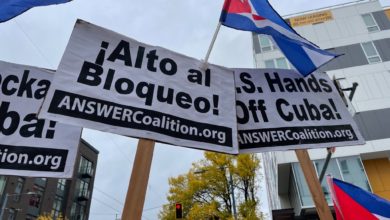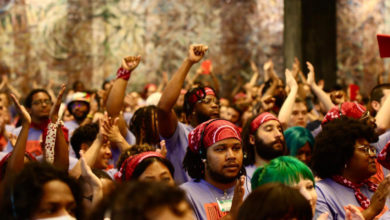The summit of the Non-Aligned Movement concluded on Sept. 17 after five days of deliberation on critical themes of poverty, war and neoliberal policies threatening much of the world’s peoples. Heads of state and others leaders of 116 countries attended, representing roughly two-thirds of the states that also belong to the United Nations.
Hosted by Cuba, whose president, Fidel Castro, was elected at the summit to head the NAM for the next three years, it
|
Unlike U.S.-dominated conferences such as the World Trade Organization or the Summit of the Americas, it took place free of the massive barricades and tear-gas that are used to protect the world’s imperialist plunderers. The host country was Cuba, whose workers are in power. Many NAM leaders extolled Cuba’s role in providing an alternative society that truly meets people’s needs.
A theme running through the summit was the need to revitalize the NAM and unite forces against growing political and economic hegemony in the world, which threatens lesser-developed countries’ independence. Some leaders gave that hegemony its name: U.S. imperialism.
Iranian president Mahmoud Ahmadinejad saluted Cuba’s anti-imperialist stance that inspires the world’s peoples. He spoke of Iran’s continuing fight for its right to develop nuclear energy and Iran’s coming presentation at the U.N. General Assembly this coming week, amidst threats of sanctions.
There were also important observer delegations, including from Puerto Rico, still colonized by the United States and facing increased FBI, Homeland Security and other incursions meant to curtail their independence movement. Juan Mari Bras and other independentistas face possible U.S. prosecution for traveling to Cuba because of the U.S. travel ban, which extends to Puerto Rico—further proof of its colonized status.
Cuba’s representatives included Felipe Pérez Roque, foreign minister; Carlos Lage Dávila, vice president of the council of state; and Raúl Castro Ruz, first vice president of the council of state and council of ministers.
The Non-Aligned Movement was founded in Bandung, Indonesia, in 1955, and was first headed by leaders of newly independent, former colonies. They were Gamal Abdel Nasser of Egypt, Sukarno of Indonesia, Jawaharlal Nehru of India, and Josip Broz Tito of Yugoslavia. Cuba was a founding member.
In its 55 years, the NAM has experienced political evolutions reflecting the international situation. Originally formed as a bloc of nations that saw themselves independent of the “superpowers,” a term that erroneously implied an equal sign between U.S. imperialism and the Soviet Union, it nevertheless was a significant formation of countries of Latin America, Africa and south Asia.
In other times, particularly during the late 1970s, it assumed a more anti-imperialist line in the wake of Vietnam’s victory and amidst emerging social revolutions in southern Africa.
Today, while not officially expressing itself as a front of resistance to U.S. imperialism, it is nevertheless an important forum of support to countries targeted by Washington. Venezuela, Cuba and Bolivia were backed in the resolutions adopted. Five documents were officially accepted at the conclusion of the NAM summit, and they included a condemnation of the possible release of the Luis Posada Carriles, the notorious terrorist responsible for the deaths of dozens of people in his decades of terrorist service for the CIA.





